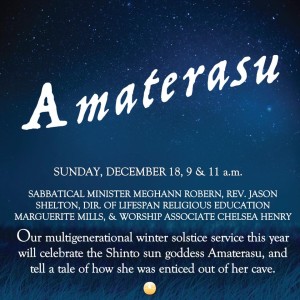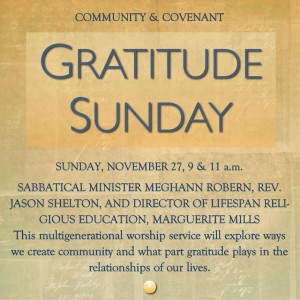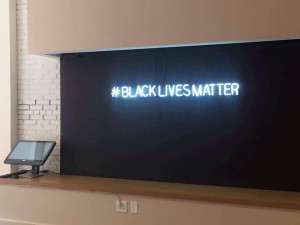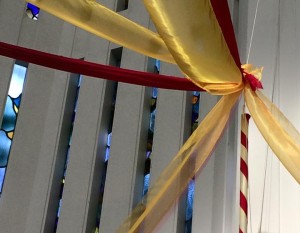This the text of a homily given at Riverbend Maximum Security Prison on March 25th, 2016.

The supreme irony of the whole crucifixion scene is this: He who was everything had everything taken away from Him. He who was perfect was totally misjudged as “sin” itself (Romans 8:3-4). The crucified Jesus forever tells power and authority, and all of us, how utterly wrong we can be about who is in the right and who is sinful (John 16:8). All human solidarity and sympathy was taken away from Him and He finally had to walk the journey alone, in darkness, in not-knowing, as most humans finally have to do.
Jesus hung in total solidarity with the pain of the world and the far too many lives on this planet that have been “nasty, lonely, brutish, and short.” After the cross, we know that God is not watching human pain, nor apparently always stopping human pain, as much as God is found hanging with us alongside all human pain. Jesus forever tells us that God is found wherever the pain is, which leaves God on both sides of every war, in sympathy with both the pain of the perpetrator and the pain of the victim, with the excluded, the tortured, the abandoned, and the oppressed since the beginning of time. I wonder if we even like that. There are no games of moral superiority left. Yet this is exactly the kind of Lover and the universal Love that humanity needs.
What else could possibly give us a cosmic and final hope? This is exactly how Jesus redeemed the world “by the blood of the cross.” It was not some kind of heavenly transaction, or “paying a price” to God, as much as a cosmic communion with all that humanity has ever loved and ever suffered. If he was paying any price it was for the hard and resistant skin around our souls. — Richard Rohr
For many years, I didn’t understand Easter as a Christian holiday. Don’t get me wrong, I love Jesus. Christmas was easy for me to understand. But to a much younger version of me, Easter as a holiday that celebrated the death and resurrection of someone I believed to be a man with a message, well, I found it corruptive. I blamed Easter for so much of Christianity manifesting as a death cult of personality and of miracles that no longer happen in our world, as opposed to a religion that should be speaking truth to power and easing suffering wherever it might be found.
And then I went to a Christian seminary. I made dear friends, whom I respect, and who love Easter. So I listened.
They taught me about the rituals of their churches, leading up to Good Friday. How they empty their altars of artifacts and symbols until only the Spirit remains. How that emptiness in a place of worship and community leads them to lament — He’s leaving. He’s leaving. He’s leaving. They taught me that this day is not the holy day of a death cult, but is part of the larger story about how people, and communities, learn to cope with and to live with profound grief and loss.
In the Garden of Gethsemane, Jesus confronts the reality of what he knows will come to pass — his execution. He had a moment of choice in his past, when his dear friend John the Baptist was killed — a choice to continue their work of resistance to empire and fighting oppression, or to walk away, and be safe. It is at this moment that Jesus knows, if continues down this path, he will die, because what he asks of people with power and influence is not something they are willing to hear. What matters is how much change he can manifest in the world before they kill him to shut him up.
And so, in the Garden of Gethsemane, he despairs that he has no more time. He does not want the burden of death, nor does he want to abandon his work or the people who follow him. Even in this time and place, so near to the end, his disciples cannot stay awake for him when asks. “Father,” he pleads, “if it be possible, let this cup pass from me.” He is willing to die, has been willing to die on this path, but it is in this moment that he fears for a future without him to lead the way. His disciples continue to fail, unable to stay awake, unable to wait with him and pray, And they are us.
The first time I realized that, I was heartbroken. No one wants to imagine themselves as the sidekick, always paling in comparison to the hero of the story. And yet, Jesus is the hero because, ultimately, he believes that despite our brokenness, despite our failures… we are just as good, and as worthy, as he is. “If this cannot pass unless I drink it, “ he says, “your will be done.” We cannot stay awake, and yet the care and justice of the world is passed into our hands by someone who believes we can, who believes we will stay awake.
My Christian colleagues taught me that the lessons of Easter are about forgiving the most unforgivable of sins — not because Jesus sacrificed his life as some kind of payment for all time, but because each of us has failed time and time again. And despite our brokenness, Jesus took up that cross because he knows we can be better. He asks us to be better, relentlessly, for our entire lives.
Because I believe what he learned, as he prayed in the Garden of Gethsemane, is that he wasn’t enough by himself. His disciples were followers, not teammates. He died because one person, alone, is not enough to tear down the oppressions of empire and corruption. His death was not about sacrificing himself for some cruel sense of atonement, a bargain of blood with a hateful God. He died because he could go no further, and he died with hope that his disciples, now apostles, would resurrect him not in body, but in word and deed. Jesus’s death teaches us that the Kingdom of God, in which all are free from suffering, is found in building sustainable communities that work for a better world.
No matter how many times we fail, we must always find the strength, somehow, to pick up the pieces and try again — not for our sakes, but for the sakes of others. Jesus died with his mission unfulfilled. His resurrection happens not just on Easter, but on every day that we are willing to reach out our hands, without expectation, without judgement — with just loving intention and strength of will — to learn, to create, and to listen.






